Are you planning on remodeling your bathroom and need to know what size pipe to use for the shower drain? If so, then you’re in the right place.
In this blog post, we’ll discuss the different types of pipes available, what size you should use for your shower drain, and tips for a successful installation.
Whether you’re a professional contractor or a DIY enthusiast, our guide will make sure your bathroom remodel is a success.
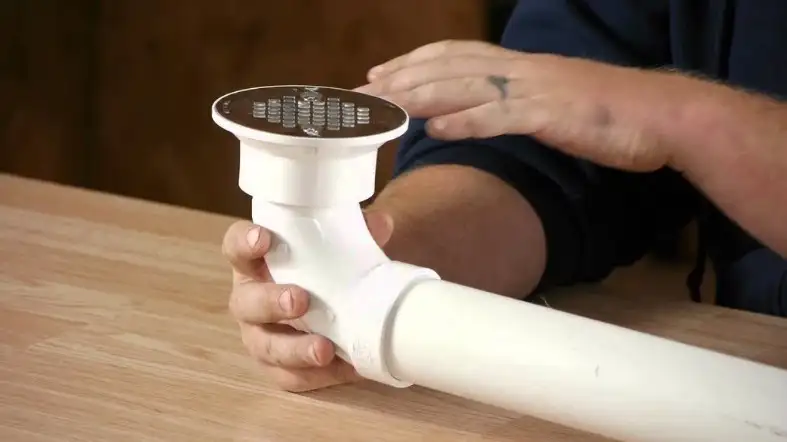
What Size Pipe For The Shower Drain?
For a shower drain, The standard pipe size is 2 inches. This size is sufficient to keep even the shallowest shower tray from overflowing. Some states and cities may require a 1.5-inch shower drain pipe, but it may not be sufficient to prevent flooding.
Shower Drain Pipe Size Chart:
| Shower Size | Drain Pipe Diameter |
|---|---|
| Up to 2 feet x 2 feet | 1 1/2 inches |
| Up to 3 feet x 3 feet | 2 inches |
| Up to 4 feet x 4 feet | 3 inches |
| Up to 5 feet x 5 feet | 4 inches |
Different Types of Pipes Suitable for Shower Drains
When it comes to shower drains, there are several types of pipes to choose from. Here are some of the most popular types of pipes that are suitable for shower drains:
PVC Pipes
PVC pipes are a popular choice for their durability and affordability. They are resistant to corrosion and easy to install. PVC pipes come in a variety of sizes and lengths, making it easy to find one that suits your needs.
ABS (Acrylonitrile Butadiene Styrene) Pipes
ABS pipes are another popular choice for shower drains. They are lightweight, durable, and resistant to corrosion. ABS pipes come in a variety of sizes and lengths.
Brass Pipes
Brass pipes are a luxurious option for shower drains. They have a natural resistance to corrosion and add elegance to any bathroom. Brass pipes come in a variety of sizes and lengths.
Cast Iron Pipes
Cast iron pipes are a durable option for shower drains. They have a long lifespan and are resistant to corrosion. Cast iron pipes come in a variety of sizes and lengths.
Factors Influencing Pipe Size Selection for a Shower Drain
When selecting a pipe size for your shower drain, there are several factors to consider. Here are some of the most important ones:
Shower Type and Water Flow Rate
The type of shower you have and the water flow rate will determine the size of the pipe needed for your shower drain. A larger shower with multiple showerheads will require a larger pipe to handle the increased water flow.
Drainage Slope Considerations
The slope of your shower floor is an important factor to consider when selecting a pipe size. The slope should be at least 1/4 inch per foot to ensure proper drainage.
Optimal Slope Measurements
The optimal slope measurement for a shower floor is between 1/4 inch and 3/8 inch per foot. This slope will ensure that water flows towards the drain and prevents standing water.
Importance of Proper Sloping
Proper sloping is essential to prevent water from pooling on your shower floor. Standing water can lead to mold growth, mildew, and other health hazards.
Local Building Codes and Regulations
Local building codes and regulations may dictate the minimum pipe size required for your shower drain. Be sure to check with your local building department before installing your shower drain.
Type of Flooring and Shower Base Material
The type of flooring and shower base material you have will also influence the size of the pipe needed for your shower drain. A thicker flooring material may require a larger pipe to ensure proper drainage.
What Happens If I Want The Drain Size To Be Smaller?
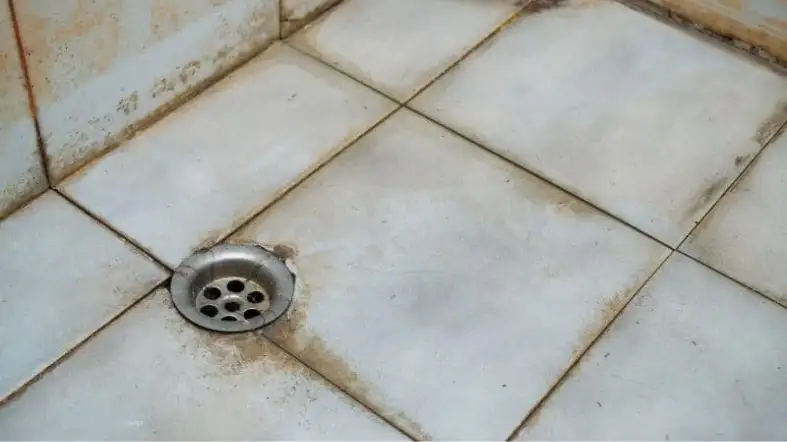
If you want the drain size to be smaller than what is recommended, here are some potential consequences:
Clogging
If the drain size is too small, it can become easily clogged by hair, soap, and other debris that goes down the drain.
This can cause water to back up in the shower, leading to standing water and unpleasant odors.
Slow Drainage
A smaller drain size can also result in slow drainage, meaning water will take longer to fully drain out of the shower.
This can lead to a buildup of water in the shower, which can increase the risk of slips and falls.
System Overload
If the drain size is too small, it can overload the plumbing system, leading to backups and other problems.
This can cause damage to the plumbing system and require costly repairs.
Noncompliance
Choosing a drain size that is smaller than what is recommended may not be compliant with local plumbing codes.
This can result in fines, delays in construction or renovation projects, and potential legal liabilities if the non-compliant drain causes damage or injury.
What About Spaces That Combine A Shower And A Tub?
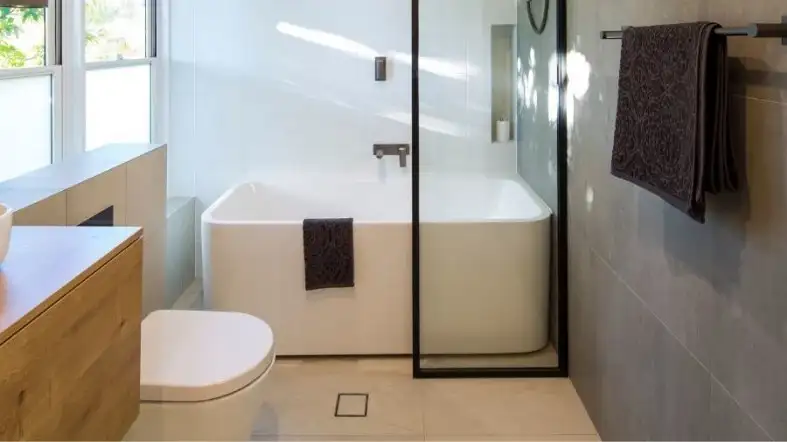
When a space combines a shower and a tub, it is important to consider the drain size for both fixtures.
Here are some general guidelines for selecting the appropriate drain size for a combined shower and tub:
Shower Drain
The size of the shower drain should be based on the size of the shower, as outlined in the table provided earlier.
The shower drain should be able to handle the maximum amount of water that could potentially flow through it during a shower.
Tub Drain
The size of the tub drain should also be considered.
The standard size for a tub drain is 1 1/2 inches in diameter, but some tubs may require a larger drain size depending on the manufacturer’s specifications.
It is important to ensure that the tub drain is compatible with the plumbing system and can handle the maximum amount of water that could flow through it during a bath.
Combined Drain
In some cases, a combined drain may be used for both the shower and the tub.
In this scenario, it is important to select a drain size that can handle the maximum amount of water that could flow through both fixtures at the same time.
Things That Should Be Considered Before The Installation Of A Shower Drain
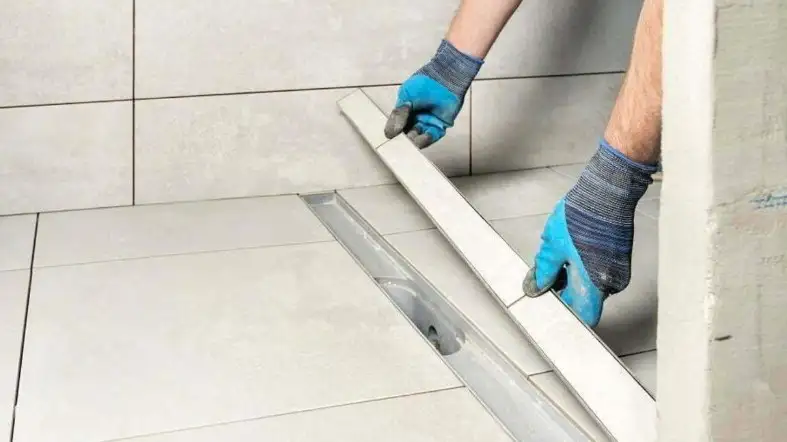
While replacing or installing a shower drain is not difficult, many people prefer to hire a professional for the job.
It is still useful to have some knowledge about the process to avoid being deceived or confused about costs.
The installation of pipes can be done quickly, and with a completed shower base, the process takes only a few hours.
Determine The Diameter Of Your Existing Drain Pipe
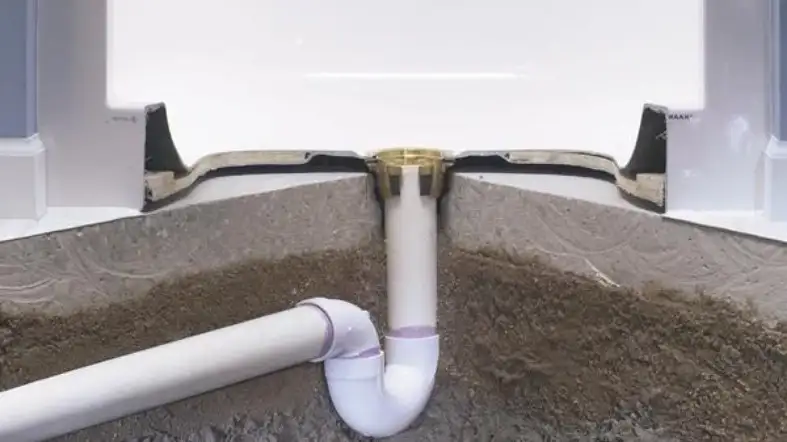
As was just indicated, the standard diameter for the drain pipes in showers is two inches.
There are some cases with a 1.5 or 3-inch difference.
Be careful to check the municipal or building codes to prevent yourself from having to make another journey to the plumbing supply store.
You Must Make A Hole In The Ceiling
In certain instances, the only option to access the pipes is to break through the ceiling beneath the shower.
The drywall on the ceiling below and the drain itself are frequently changed due to leakage.
This procedure is relatively straightforward and may be completed quickly.
It is essential to do the replacement as soon as you discover leakage, so the problem does not worsen and cause additional harm.
When the ceiling beneath the shower is removed, wiring and pipes that are in the way are discovered.
They prevent you from reaching the water pump pliers and the drain-pump connection nut.
The most typical method is to remove the shower base to gain access to the drain from above.
You May Need To Replace The Entire Trap
Some shower drains have excessively welded joints, making rapid repairs difficult.
The reduced drainpipe that is left after removing the previous drain is not long enough to work correctly.
You may address this issue by extending the drain where it’s needed, but this is a physically demanding and annoying task because it requires working overhead in a confined location.
It is significantly easier to remove the entire drain trap and replace it with a new one.
FAQs About Pipe Size For Shower Drain
What Is The Standard Drain Pipe Size For A Shower?
The majority of shower pans and trays are designed for two-inch drain pipes.
In contrast to the 1.5-inch drain pipe, the 2-inch drain pipe is able to withstand water pressure and volume.
Because of this, the majority of construction rules stipulate this drain pipe size for shower drainage.
Even though your building specifies a 1.5-inch pipe, we recommend going with the larger size.
Do All The Shower Drain Pipes Cover The Same Area?
No, shower drain covers vary in size in the same manner as drains.
It is essential to examine the specifications and ensure you are purchasing the correct size.
How Do I Calculate The Length Of A Linear Shower Drain?
The size of your shower and the location of your drain will determine how long your linear shower drain should be.
These two considerations must be taken into account to ensure that the end is put at a uniform distance from both walls and covers less than eight to ten cm on each side.
A linear shower drain must be the same length as the distance between walls and at least 4 inches on all sides when installed wall to wall.
A linear shower drain should not exceed the distance between two neighboring walls.
The specs for linear shower drain installation are available on the manufacturer’s website.
To properly install without causing any property damage, it would be helpful to read the instructions beforehand.
Final Thoughts
Now you know the answer to the question, What size pipe for the shower drain?
modern bathrooms are constructed in a variety of ways, the drain pipe size must always adhere to industry requirements.
Some bathrooms have a 1.5-inch drain pipe size, while the usual drain pipe size is 2 inches.
If you have a very small drain, water will not be able to move through, causing possible complications.
We strongly recommend that you get an expert to complete this task. If you have any further inquiries, please email us or leave a remark.
